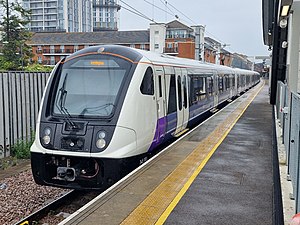The Impact of the Elizabeth Line on London’s Transport System

Introduction
The Elizabeth Line, also known as Crossrail, officially opened on May 24, 2022, transforming London’s transport landscape. This much-anticipated railway not only improves connectivity across London but also reduces travel times significantly. The line stretches over 60 miles from Reading and Heathrow in the west to Shenfield and Abbey Wood in the east, making it one of the most significant rail projects in the UK. Its relevance extends beyond improved travel, as it aims to support economic growth and development in the Greater London area.
Key Features and Developments
The Elizabeth Line features 41 stations, with ample interchanges to existing tube, train, and bus services, making it easier for commuters and visitors to navigate the city. One of the standout characteristics of the line is its ability to run trains every 5 minutes during peak times, increasing capacity for up to 200 million passengers annually. Modern design, advanced technology, and new trains provide a comfortable and efficient travel experience.
With stations like Bond Street, which reopened after a multi-year construction process, the line has injected life into areas previously considered transport deserts. The line has also made substantial contributions to local economies, with estimates suggesting an economic boost of £42 billion due to increased productivity and new jobs.
Environmental and Economic Significance
One of the critical components of the Elizabeth Line is its commitment to sustainability. The line is designed to be energy-efficient, with regenerative braking systems and energy-efficient trains that overall aim to lower emissions. This aligns with London’s broader environmental goals, contributing to cleaner air and reduced congestion in the city.
Challenges Ahead
While the launch of the Elizabeth Line is celebrated, the project has faced its share of challenges. Initial delays and budget overruns have raised questions about the management of such large-scale infrastructure projects. Looking forward, the key will be maintaining the infrastructure and ensuring that it meets the evolving needs of London’s growing population.
Conclusion
In conclusion, the Elizabeth Line represents a major advancement in London’s public transport system. By improving accessibility and reducing travel times, it encourages economic growth and demonstrates a commitment to environmental sustainability. As its full potential unfolds in the coming years, the Elizabeth Line will undoubtedly play a vital role in shaping the future of transportation in London, enhancing its global status as a connected and accessible city.





